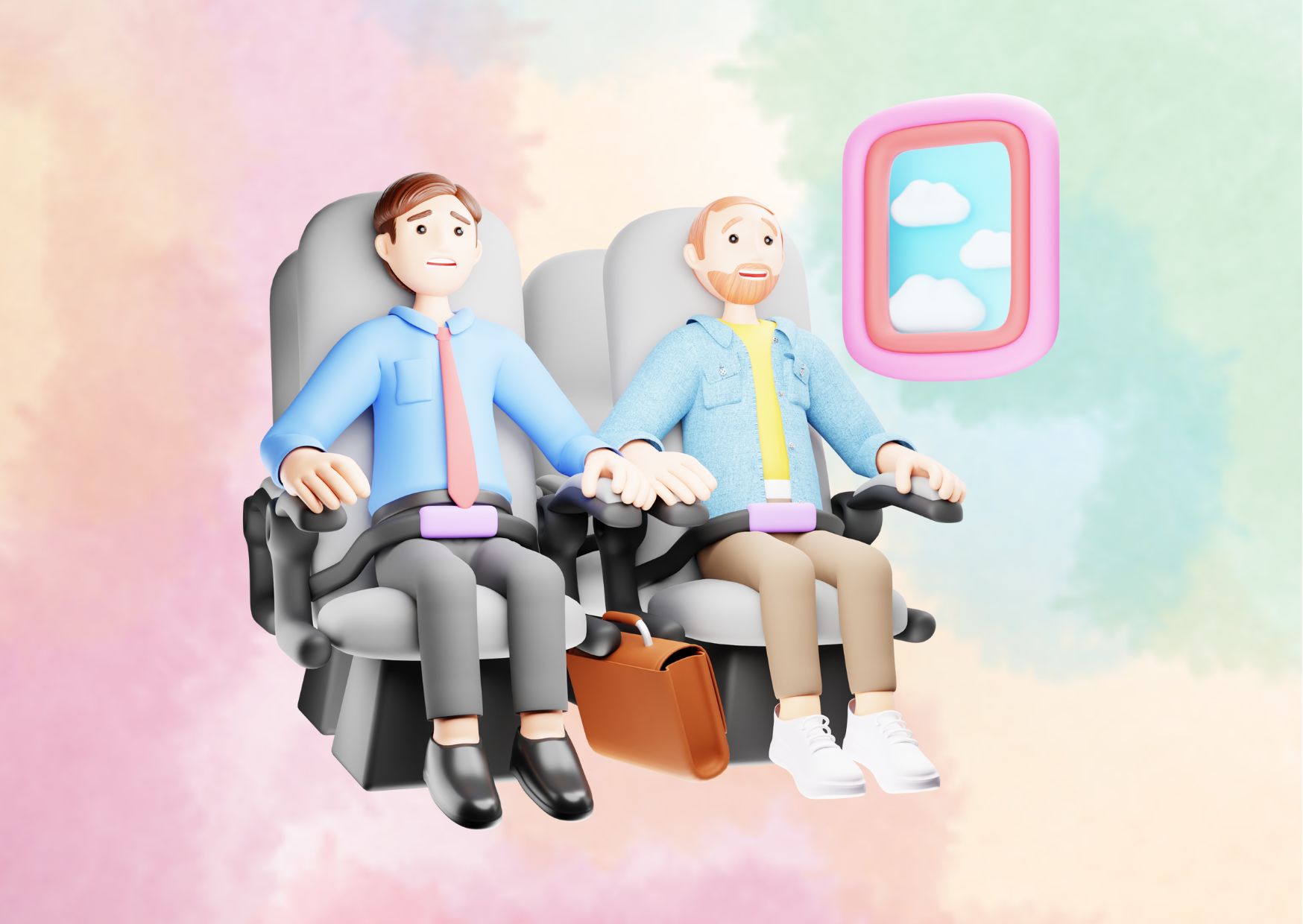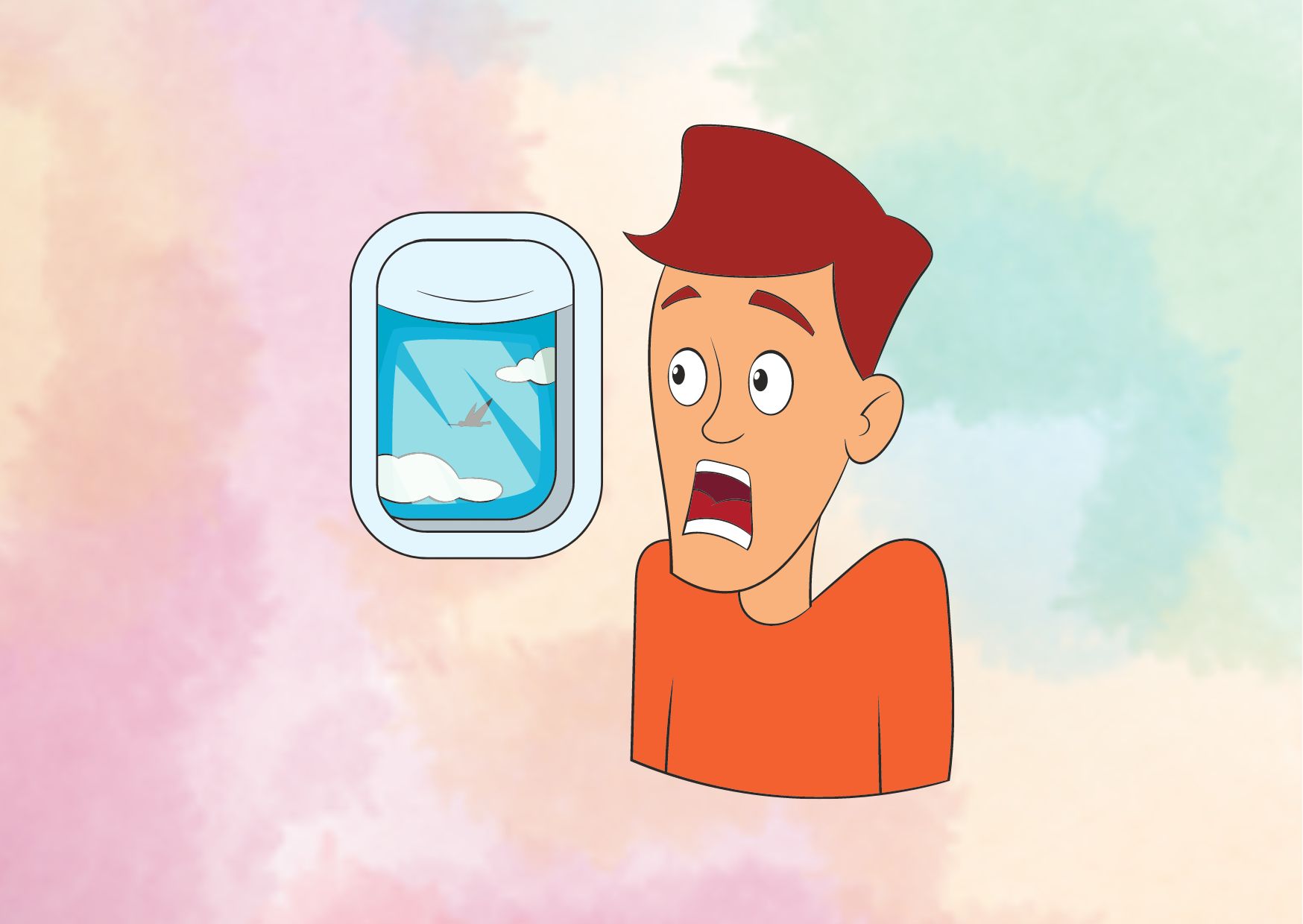10 Tips to Conquer Your Fear of Flying: Expert Tips and Strategies
The fear of flying, also known as aerophobia or aviophobia, is an extremely common phobia that affects millions worldwide. Although fears related to air travel may seem irrational to some, for those grappling with this condition, the anxiety and panic attacks experienced can be debilitating and overwhelming. Fortunately, numerous strategies exist to help individuals overcome their fear of flying and reclaim control during their journeys.
This comprehensive guide delves into expert-recommended techniques to conquer the fear of flying. It explores the root causes, offers practical tips for managing anticipatory anxiety, discusses exposure therapy approaches, and provides in-flight coping mechanisms. Additionally, it examines the philosophical perspectives that can reshape one’s mindset, empowering individuals to embark on their travels with newfound confidence.
It appeared out of nowhere
For many individuals, the fear of flying doesn’t arise from a single, identifiable event. Instead, it can manifest gradually, with various factors contributing to its development over time.
Remembering a Bad Flight Experience
While most flights are uneventful, even a single turbulent or unsettling experience can plant the seeds of aerophobia. The memory of a particularly bumpy ride, unexpected turbulence, or a frightening announcement from the pilot can leave a lasting impression, causing anxiety and apprehension about future flights.
Hearing Scary Stories
Hearing harrowing tales of plane crashes, near-misses, or other aviation incidents can also trigger a fear of flying, even if the individual hasn’t personally experienced any such events. The human mind has a remarkable ability to vividly imagine and internalize the experiences of others, leading to vicarious fears and anxieties.
Flying During a Stressful Period
For some individuals, the fear of flying can arise or intensify during periods of heightened stress or significant life changes. Major events like starting a new job, getting married, or becoming a parent can create a sense of vulnerability, making the idea of air travel more daunting and anxiety-provoking.
Existing Phobias and Anxiety Disorders
Individuals with pre-existing phobias or anxiety disorders may be more susceptible to developing a fear of flying. Conditions like claustrophobia (fear of enclosed spaces), agoraphobia (fear of being trapped or unable to escape), or panic disorder can exacerbate the discomfort and anxiety associated with air travel.
While the root causes may vary, the fear of flying often stems from a perceived lack of control and a sense of vulnerability. Even without a specific triggering event, the combination of these factors can gradually erode an individual’s confidence in air travel, leading to the development of aerophobia.
I did so many things before flying
For many individuals grappling with a fear of flying, the anticipation leading up to a flight can be just as daunting as the flight itself. However, there are various strategies and techniques that can help alleviate this anxiety and better prepare for the journey ahead.
I Better Educated Myself
One of the most effective ways to combat the fear of flying is by arming oneself with knowledge. As the saying goes, “knowledge is power,” and understanding the mechanics and safety protocols of air travel can go a long way in alleviating unfounded fears.
My biggest recommendation to overcome your fear of flying is to buy three different books.
- The first book that I recommend is called “Cockpit Confidential.”This book provides an inside look into the aviation industry, written by a commercial pilot. It demystifies many aspects of flying, offering insights into the training and procedures that pilots undergo, as well as the safety measures in place.
- The second book that I recommend is called “Soar: The Breakthrough Treatment for Fear of Flying.”This book delves into the psychological aspects of aerophobia, offering practical techniques and exercises to help manage anxiety and overcome the fear of flying.
- The third book that I recommend is called “The Easy Way to Enjoy Flying.”As the title suggests, this book aims to help readers develop a more positive mindset towards air travel, providing strategies to reframe their perspective and embrace the experience.
I Always Checked Out Flight Radar 24 Before My Flight
Another helpful technique is to familiarize oneself with the specific flight details before departure. Whenever I started to feel nervous about an upcoming flight, I would open a new tab on my browser and head to Flight Radar 24. This website provides real-time tracking of flights worldwide, allowing me to monitor the path of my scheduled flight, as well as weather conditions and potential delays.
I Hung Out on the Fear of Flying Subreddit
Seeking support and connecting with others who share similar experiences can be incredibly valuable. I spend a lot of time on Reddit, so of course, I had to join r/fearofflying. This online community serves as a platform for individuals to share their stories, seek advice, and offer encouragement to one another.
I Started Behaving As Though I was Fear-Free
One of the biggest steps to overcoming my flight anxiety was to pretend as though I didn’t have flight anxiety at all. This technique, known as “acting as if,” involves adopting the mindset and behaviors of someone who is confident and fearless when it comes to flying. By consciously shifting my thoughts and actions, I gradually started to internalize a more positive attitude towards air travel.
I Headspaced My Fears Away
Mindfulness and meditation can be powerful tools in managing anxiety and promoting a sense of calm. If there’s one thing that’s made a huge difference to my mental health, it’s regularly using the meditation app Headspace to create a tiny sanctuary of calm in my frenzied brain. Before a flight, I would make sure to practice some guided meditations, allowing me to approach the journey with a clearer and more focused mindset.
I Took Dramamine or Benadryl for Naps
For some individuals, the fear of flying is exacerbated by the discomfort of motion sickness. I get motion sickness on planes, so I usually take a Dramamine or Benadryl before boarding anyway. And one bonus to this? They make me pretty drowsy, so I end up spending most of my flight snoozing. This not only helps alleviate any potential nausea but also allows me to bypass the anxiety-inducing parts of the flight by sleeping through them.
I Imagine I’m Taking a Flight Every Day of My Life
Visualization techniques can be incredibly powerful in reshaping our mindset and desensitizing ourselves to fear-inducing situations. You know what else helps? Imagining that I’m about to step on a plane during random moments in my life. Even if I don’t have a flight coming up for months, I like to pretend that I need to head to the airport in a few hours. This exercise helps to normalize the fear of flying, making it feel like a routine part of my daily life rather than an anxiety-provoking event.
Here are 3 things that have helped me control my fear of flying
- Hug your loved ones or visualize them during turbulence
During turbulent moments, one effective technique is to embrace or visualize the presence of loved ones. This simple act can provide a profound sense of comfort and grounding, reminding the individual that they are not alone and that there are people who care deeply for their well-being. By focusing on the warmth and familiarity of these cherished connections, the mind can shift its attention away from the unsettling sensations of turbulence and find solace in the emotional support of those closest to them.
- Acknowledge physical symptoms as anxiety, not danger
It is crucial to recognize that the physical symptoms experienced during a flight, such as rapid heartbeat, sweating, or shortness of breath, are not indicators of actual danger but rather manifestations of anxiety. By consciously labeling these sensations as anxiety-related, individuals can separate their fear of flying from the perceived threat, allowing them to regain a sense of control and rationality. This cognitive reframing can help prevent the escalation of anxiety and promote a more balanced perspective.
- Remind yourself that flying is safe despite feeling scared
Despite the overwhelming feelings of fear and anxiety, it is essential to remind oneself that flying is an incredibly safe mode of transportation. Commercial aviation has stringent safety protocols and highly trained professionals dedicated to ensuring the well-being of passengers. By repeating this factual reassurance, individuals can counteract the irrational thoughts that often accompany aerophobia and reinforce the reality that their fear does not align with the actual level of risk involved in air travel.
Anticipatory Anxiety
Anticipatory anxiety, or the fear experienced in anticipation of taking a flight, is a significant component of the fear of flying. It often manifests as a persistent worry or dread leading up to the scheduled departure, causing many individuals to avoid planning flights altogether or canceling them entirely.

